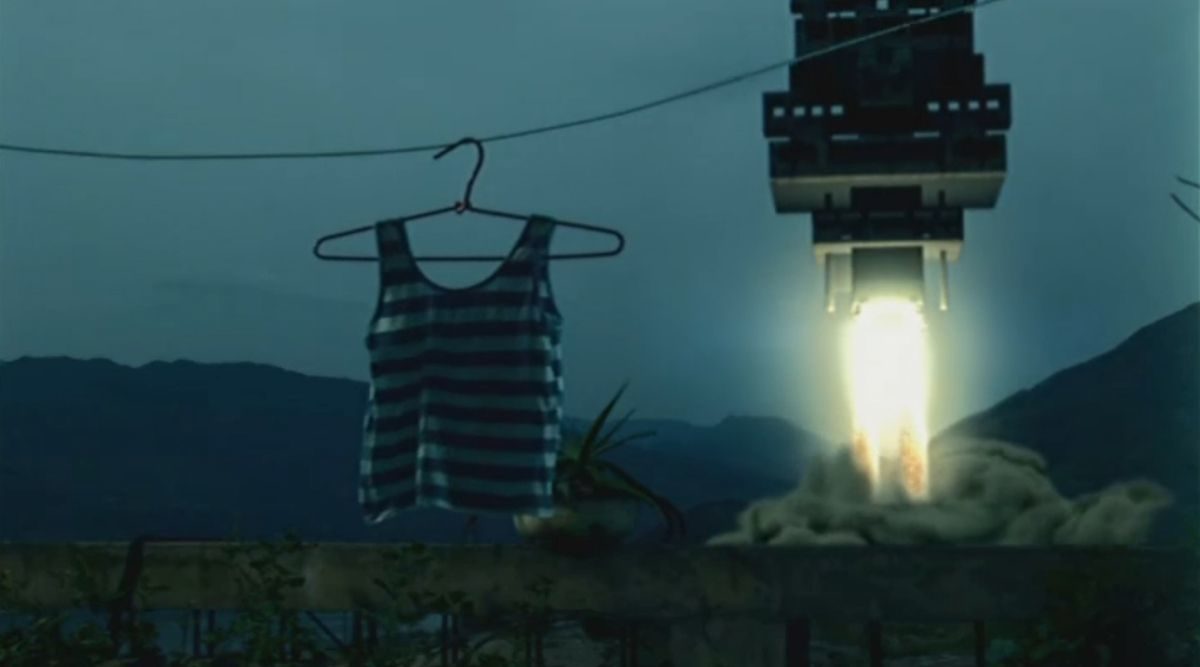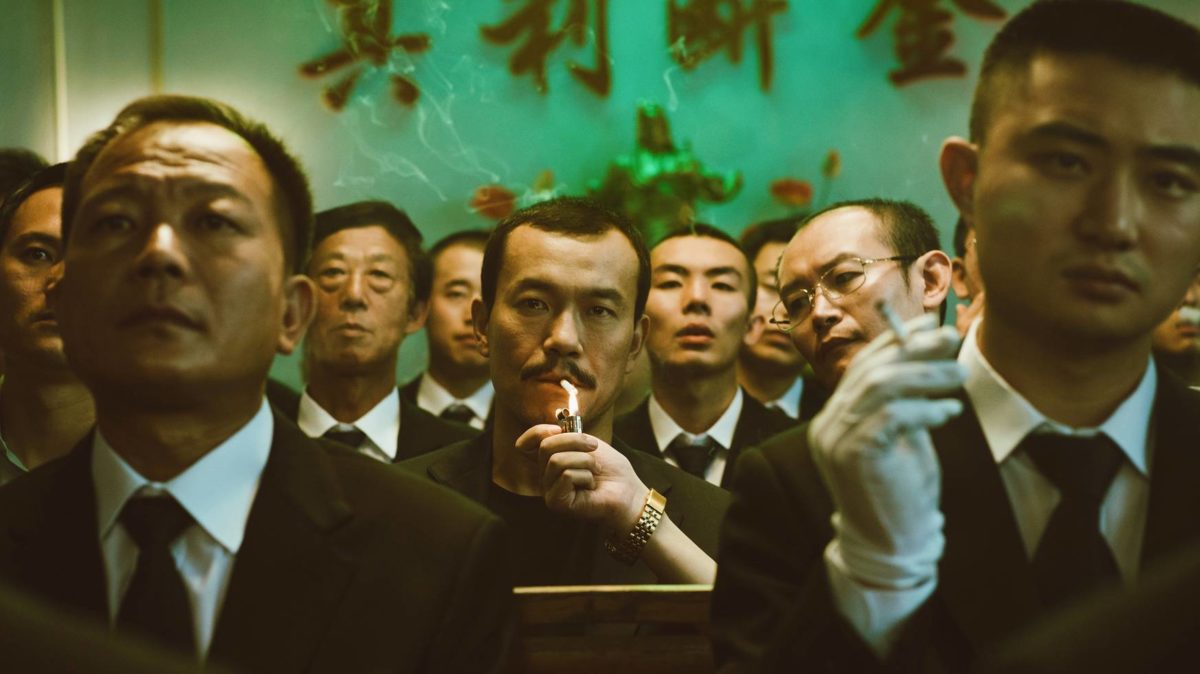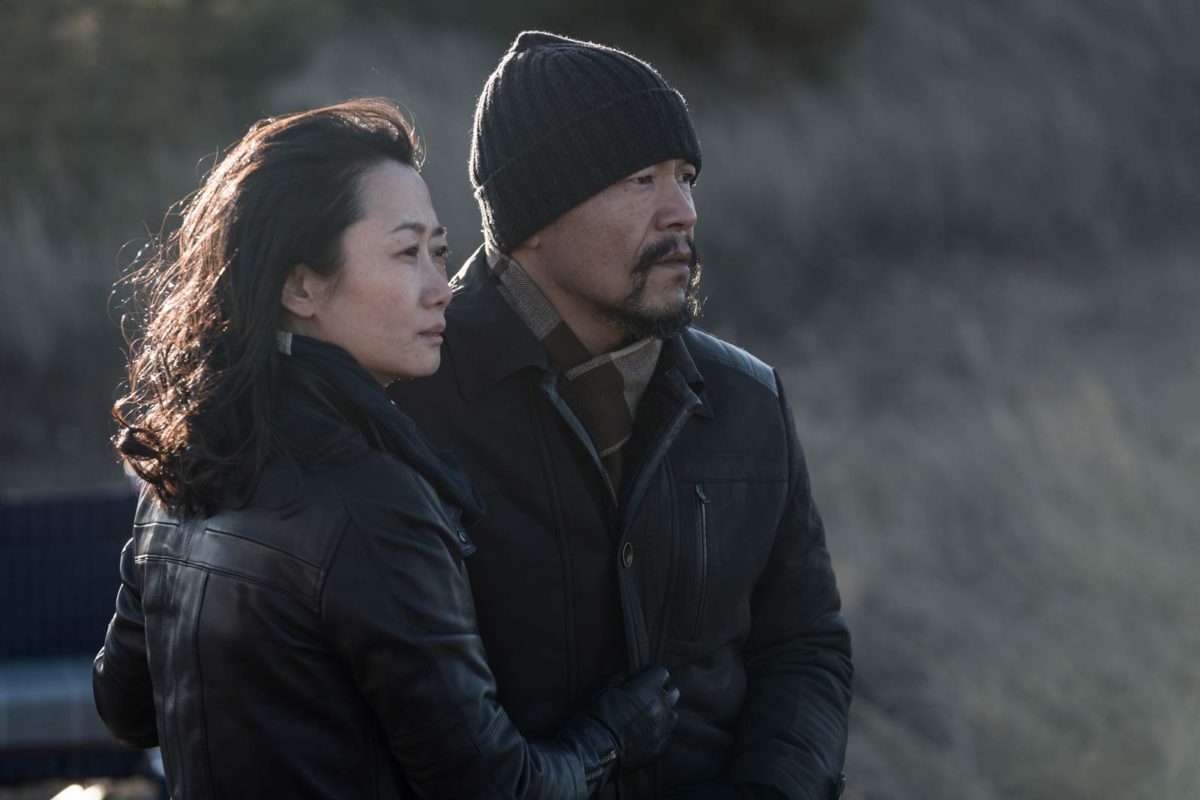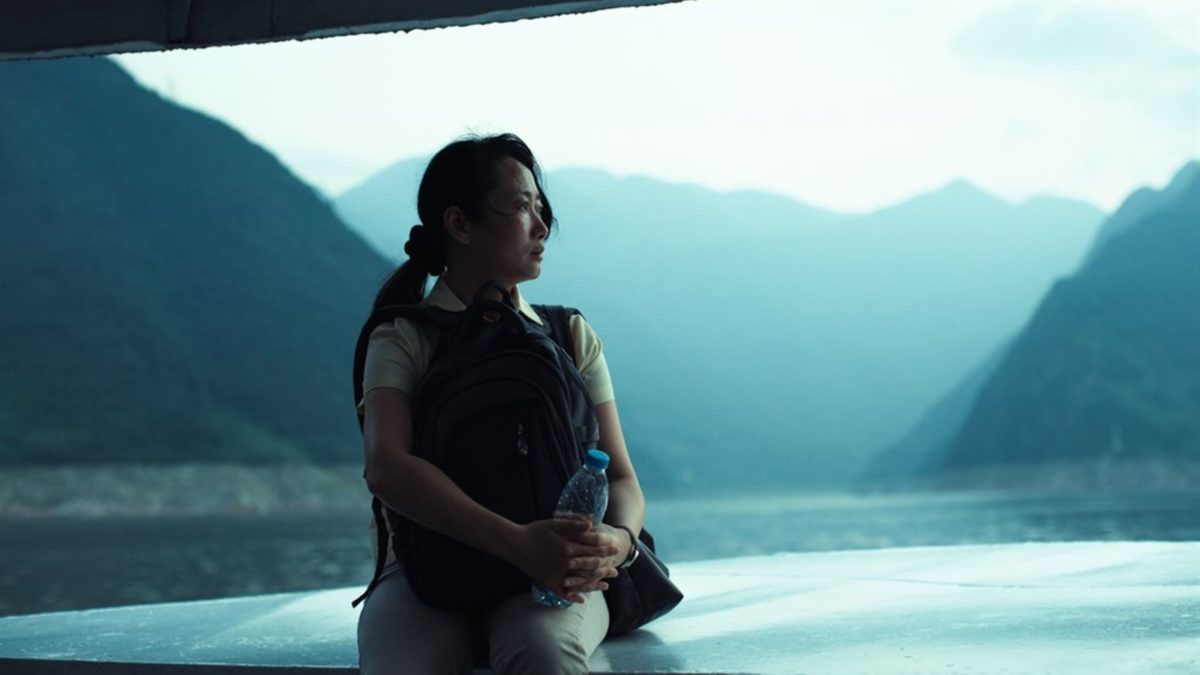Camille Bourgeus spoke with Jia Zhangke at the avant-premiere of his latest film Ash Is Purest White (2018) in Brussels.
For over two decades now, director Jia Zhangke has been one of the leading representatives of independent filmmaking of his country. Making both documentary and fiction films (and more often than not challenging these categories) his cinema captivates both audiences at home and abroad as he recounts individuals’ stories against the backdrop of China’s fierce and fascinating process of modernization. Jia Zhangke made his first three films, Pickpocket (1997), made upon graduation, Platform (2000) and Unknown pleasures (2002), outside of the state system and without official approval by the Chinese censor. Made on small budgets, in China his films circulated primarily in underground film clubs and on pirated copies all over the country. Since The World (2004), a melancholic film zooming in on bored youngsters working in an uncanny mini-world theme park in Beijing, Jia started making censor-approved films. A ‘compromise’ but one that allowed him to make films for the (broader) Chinese audience as well.
I had the chance to talk to Jia Zhangke at the avant-premiere of his latest film Ash Is Purest WhiteSee also Ruairí McCann’s review from the 2018 Young Critics Workshop at Film Fest Gent. (2018) in Brussels last month. Ash Is Purest White, essentially a love story, chronicles a seventeen years episode of the life of Zhao Qiao, a local gang leader’s girlfriend who heroically completes a five-year prison sentence for him, only to find out that he did not wait for her. The film’s leading role is portrayed by an unrivaled Zhao Tao, Jia’s partner, a former dancer who first performed as an actor nearly 20 years ago in Jia’s Platform and then almost continuously appeared in all of his films. With Ash Is Purest White Jia looks into the lives of an underground brotherhood of criminals referred to as the JianghuThe original title of the film, Jianghu ernü (江湖儿女), literally ‘Sons and Daughters of the Jianghu’, is in that sense more telling. in Chinese, an age-old term that symbolizes a network of outsiders and gangsters operating independently from society along its own set of rules and beliefs. “Wherever there are people, the Jianghu exists.” Jia quoted this people’s saying during the Q&A of the Brussels screening. By zooming into “The Gang of the Five Lakes and Four Seas”, a local Datong brotherhood, Jia meticulously dissects how traditional communities try to survive their country’s far-reaching transition as their business falters and their values achingly rub against those of China’s newly set capitalist society.
Ash Is Purest White obviously has a strong temporal component: we follow Zhao Qiao over a seventeen years period of time, from 2001 until 2018. But your film has a prominent spatial dimension as well: Qiao embarks on a long journey through the country and in doing so revisits some of the key places of your filmography. It seems to me that space is really important in your cinema in order to connect different struggles, to map issues of Chinese modernity that would otherwise seem unrelated. How do you use ‘space’ as a tool in your cinema?
Jia Zhangke: I have a particular interest for ancient Chinese landscape painting, and it is especially fascinating how in each individual painting people and space are carefully related to one another. Taking this to Ash Is Purest White, I would like to explain two things. Firstly, I wanted to tell a story about life unfolding as it does — with all the surprises, mysteries and unknown side paths that naturally come with it. Ash Is Purest White unrolls over a timeframe of seventeen years, from 2001 to 2018, as a kind of time travel allowing us a close look into the life of this one particular protagonist Qiao. Secondly, there is the question of space: I wanted to return to those spaces where I previously recorded my films. In order to understand Chinese society today, I thought it was necessary to somehow go back to the past by revisiting these places.
I like to think that everybody within society is part of the same big ‘space’. In this space, you can find all kinds of different information about people and how they are positioned within Chinese society. In depicting a place extensively, I invite my audience to see other and possibly more nuanced ways as to how certain people relate to others and to society. I value cinematic space because it allows you to get to the core of how the characters in your film feel. Simple things like whether they feel too cold or too hot for example or cramped within a huge crowd… It is possible to represent physical experiences like these through the use of space. In the end I want the audience to be able to relate to the characters, by ways of imagining to be within their space.
You filmed the documentary Dong (2006) and the fiction film Still Life (2006) at the same time, on the same location: the old village of Fengjie near the Yangtze River which is slowly disappearing under to the construction of the Three Gorges Dam. Why did you need two films to tell the story?
JZ: In fact, the Three Gorges Dam is really far from where I live in Beijing. I therefore wasn’t directly involved with the problem of the relocation of thousands of people in the area. From 1994 onwards we were gradually informed that this was going to be a big project, and that people were going to have to move. My intention to go to the Three Gorges Dam area in 2006 was actually to make a documentary on the Chinese artist, Liu Xiaodong, who was working on a painting there. From this resulted my documentary Dong (2006). However, upon arrival in the village of Fengjie I was impressed by the fast pace of the deconstruction going on there and I got inspired to make Still Life (2006). I consider these two films as a diptych on the same topic.
The protagonist of Still Life, Han Sanming, a returned migrant worker looking for his wife and daughter, also appears in the documentary Dong. I think this phenomenon of the ‘migrating character’ in between two films (and two genres) is very interesting. It is playful, and at the same time alienating. Why did Han Sanming have to reappear in Dong?
JZ: In the paintings of Liu Xiaodong different workers are portrayed. They are actual workers that are observed and painted by Liu on their respective working spots. One of them was Han Sanming, a miner. Similar to my working practice, Liu Xiaodong also cherishes this situation: an actual worker serves as a model for the artist’s painting. When I saw Han on Liu’s canvas, I thought I could also see him appear in my (fiction) film Still Life.

In an interview you once said: “I am a realist director. But we have to answer the question: what is realism today?” Do you already know how to answer that question? What is a realist aesthetics to you?
JZ: I don’t think of realism as a style, but rather as a mindset or a way of thinking. It is a practice of extracting situations directly from reality itself. For example: you can extract scenes from your own struggles and experiences. Even more important I think, when talking about realism, is that you have to include everything that comes close to the experience of reality, therefore also the surreal. If you record a scene based on your own experience, but this experience feels very unreal, simply so much different from everything you experienced before, that is when you need surrealism in your film. I think surrealism is a part of realism. And that’s why we should think of realism as an expanding concept, and not as a closed box or a vacuum.
What you say about surrealism reminds me of a scene in Still Life (2006) when the main character, again played by Zhao Tao, observes a UFO traversing the sky. In the last scene of the film, a building takes off like a space ship. In Ash Is Purest White Qiao once again encounters mysterious seemingly extraterrestrial lights in the night sky…
JZ: Throughout the entire time span of the film, Qiao has to deal with generational issues over and over again: between her and her father, her and her boyfriend Bin… The constant problems, expectations and misunderstandings in her life are like a cycle she cannot breach. But then, upon arrival in Xinjiang in the far northwest of China, she encounters these mysterious lights in the sky and for the first time in her life she acknowledges that she is on her own. She feels the energy to engage in things that were before not even within reach of her perception. She is overcome by a feeling that transcends reality, a sense of fundamental loneliness that she comes to perceive as the only reality, the essence, of her life.

On the other hand, in Ash Is Purest White, you have succeeded in capturing one of the last things that isn’t touched by China’s new capitalist logic: an underground organization of crooks (Jianghu), however, bound to loyalty, care and sincere love. Is there, according to you, still a feeling of community or a sense of spirituality within Chinese society?
JZ: There is one really important aspect in Chinese culture that I also wanted to put forward in my film: the concept of guanxi (关系), which means something like ‘relations’ or a ‘social network’ but which is in fact very difficult to translate. Ash Is Purest White deals with the very complex guanxi within the Jianghu community; indeed, true love, care, loyalty, but also rivalry, vengeance, … In Qiao’s case; she doesn’t lose her human dignity. This is what the ‘cosmic revelation’ scene also tries to tell: of people who are looking for themselves, who are ready to confront their true inner lives.
Jianghu is not only referring to a centuries-old organization of gangsters and outsiders but also to a specific film genre. Genre film seems to have caught your interest since your martial arts-homage A Touch of Sin (2013). Can you express yourself more freely through the use of genre film?
JZ: Genre film has always been interesting to me because I like that it has a defined structure. Ash Is Purest White starts off by depicting the main characters’ lives in a way that possibly puts the audience on a false track: okay, it’s going to be this kind of film. But it turns out different. The people of the underworld are also part of our reality; their presence too is what makes up our society. In that sense I want to create an interaction between the underworld and the mainstream world, between their world and that of average Chinese citizens, or: in between our expectations and reality.

Do you feel an aesthetic connection with the cinema of other realist directors, for example with the films of your contemporary, Wang Bing?
JZ: Wang and I started making films around the same time, around the turn of the century. We have similar ways of living and working, and aesthetically we also share a few things: we both concentrate deeply on modern Chinese society. At the same time, we both like to look for an answer in history in order to grasp the present.
You’re both adepts of the long take. In Ash Is Purest White we follow Qiao on trains, boats, motorcycles, etc. during extended shots. She has time to see, and we are given time to see with her. Could you elaborate on these long takes?
JZ: I love to observe. I observe and then I decide to make a film. Long takes can mimic this gesture and reach a level of objectivity that I like. It invites the viewer to relate to what is portrayed. As I talked about before, it opens up the space, it creates room for people to take position in the film. They can adopt a position within the shot, instead of having to follow what a director’s compelling editing is prescribing. As a director, I try to be on the same level of the audience.
I particularly cherish your cinema for its moments of spontaneity: In Unknown Pleasures (2002) it takes ages for the actor to push his motorcycle up the hill and you decide not to cut. Are there documentary elements in Ash Is Purest White? Did you allow coincidence to slip into the film or for moments of improvisation to happen?
JZ: There is a visual analogy between Unknown Pleasures and Ash Is Purest White: in my last film I made a variation on the scene you mention when Qiao and her motorcycle taxi driver have technical problems as well and push the vehicle uphill, through the rain. Regarding your question, improvisation is something I am always looking for. I try to create an atmosphere which allows the actor to be able improvise once in a while. In Ash Is Purest White, after her release from prison, Qiao is looking for her boyfriend Bin. She is standing in front of the glass automatic doors of an office building that do not open. When the doors finally open, they quickly close again and Qiao puts forward her water bottle as to block the doors and get in anyway. The difficulty with the doors was actually not foreseen, but Zhao Tao included it in her acting and I think it turned out beautifully.
This water bottle gets to play a starring role in your film: Qiao takes it everywhere and it is apart from drinking water also serving as a doorstop, a weapon to hit somebody, and so on. I think, your eye for detail, materiality, precise objects… in each one of your films is striking. In Ash Is Purest White the red paint applied to the buildings to indicate how much the water level will rise is very pronounced; Bin’s gun is first closely examined and tested before it gets to play its ominous role. Money, cellphones, cigarettes are also prominently portrayed. Is this a deliberate strategy?
JZ: It would be possible to summarize a film in a few storylines, but that would exclude the significant role of detail in a film. Only through detail, it is possible to fully grasp how people live, what they do and why. The last scene of the film contains a shot filmed through surveillance cameras; I film the monitor where the surveillance cameras footage is projected to stress the fact that these images exist only for a short time. The camera films everything nonstop but nobody actually looks at these images. And after a few months, these images are automatically removed. Volatile, their existence is futile. It was therefore important to show the monitor that presents the images of Qiao. The memories of this woman will disappear with the medium that carries her.
The fast change in our society has had and still has a severe impact on individual people. People remember how it used to be, and they can try to cope with how society looks like today. But what they will forget is the transition, the movement of change. Film can help us register this process of change. And there once again, details like the exact tactility of an older medium or device offer us a chance to grasp the process of change.

I think Ash Is Purest White is a love letter to what cinema can preserve on the one hand and to what it can imagine on the other. You revisit your own body of work in a fascinating wayFor more on this, see Ruairí McCann’s essay ‘Zhangke Going Home: Retrospection in the Cinema of Jia Zhangke’, from the 2018 Young Critics Workshop., and intelligently scrutinize almost two decennia of China’s process of complex social, cultural and economic transformation. Can you retire now?
JZ: (laughs) I will definitely need some time to think about a new project. I don’t know what it is going to be, but this is surely not the end.
Jia Zhangke, thank you so much for this interview.
Many thanks to the interpreter, Wen Li, and to Thijs Verhaeren/Cherry Pickers Film to set up the interview.
